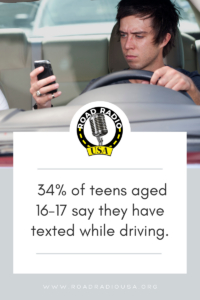 Distracted driving is a growing epidemic on our roadways, posing a serious threat to public safety and claiming far too many lives each year. Defined as any activity that diverts attention from driving, distracted driving can take many forms, including texting, talking on the phone, eating, grooming, adjusting music or navigation systems, and interacting with passengers or pets. While all drivers are susceptible to distraction, teens and young adults are particularly vulnerable due to their inexperience behind the wheel and their inclination to engage in risky behaviors.
Distracted driving is a growing epidemic on our roadways, posing a serious threat to public safety and claiming far too many lives each year. Defined as any activity that diverts attention from driving, distracted driving can take many forms, including texting, talking on the phone, eating, grooming, adjusting music or navigation systems, and interacting with passengers or pets. While all drivers are susceptible to distraction, teens and young adults are particularly vulnerable due to their inexperience behind the wheel and their inclination to engage in risky behaviors.
Teen drivers face a multitude of factors that contribute to distracted driving. Peer pressure, the desire to stay connected on social media, and the misconception of invincibility often drive teens to engage in distracting activities while driving. The prevalence of smartphones and other portable electronic devices has exacerbated the problem, making it all too easy for teens to succumb to the temptation of checking notifications, sending texts, or taking selfies while driving. Additionally, inexperienced drivers may lack the awareness and judgment needed to recognize the dangers of distracted driving and prioritize safe behavior on the road.
The consequences of distracted driving can be devastating, both for the driver and for others on the road. According to the National Highway Traffic Safety Administration (NHTSA), distracted driving claimed the lives of over 3,000 people in the United States in 2019 alone, and injured thousands more. These statistics underscore the urgent need for action to address this pervasive issue and prevent further loss of life. Beyond the physical toll, distracted driving accidents can have long-lasting emotional and financial repercussions for victims and their families, forever altering the trajectory of their lives.
At Road Radio USA, we are committed to empowering teens with the knowledge and skills they need to make safe choices behind the wheel and combat the dangers of distracted driving. Our prevention education programs inform teens about the dangerous situations they may face, including the decision to drive while distracted. By providing teens with a deeper understanding of the risks associated with distracted driving and the tools to mitigate those risks, we aim to instill a culture of responsibility and accountability on our roadways.
Preventing distracted driving in teens requires a collaborative effort involving parents, educators, law enforcement, and the broader community. Parents play a crucial role in modeling safe driving behaviors and setting clear expectations for their teen drivers. Open communication about the dangers of distracted driving, coupled with strict rules and consequences for violations, can help reinforce the importance of staying focused while behind the wheel. Likewise, educators can integrate distracted driving awareness into driver education curricula and encourage students to take the pledge to drive distraction-free.
Law enforcement agencies can also play a pivotal role in deterring distracted driving through targeted enforcement efforts and public awareness campaigns. By enforcing distracted driving laws and raising awareness about the dangers of distraction, law enforcement agencies can send a clear message that distracted driving will not be tolerated. Community organizations, businesses, and advocacy groups can further support these efforts by promoting safe driving practices and providing resources and support to those affected by distracted driving.
In conclusion, the fight against distracted driving requires a concerted effort from all sectors of society. By working together to educate, empower, and enforce safe driving practices, we can prevent countless tragedies and create safer roads for everyone. At Road Radio USA, we remain steadfast in our commitment to saving lives and making our roadways safer for generations to come. Together, we can drive change and build a future where no family has to endure the heartbreak of losing a loved one to distracted driving.